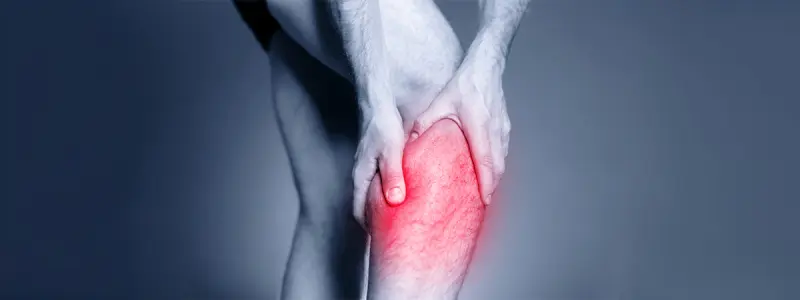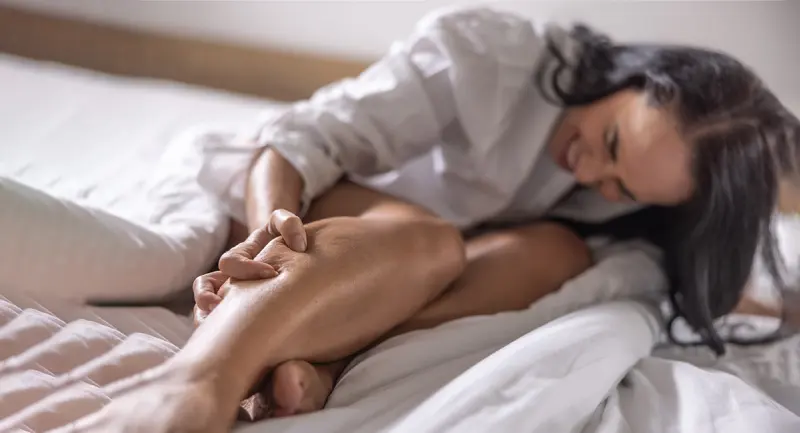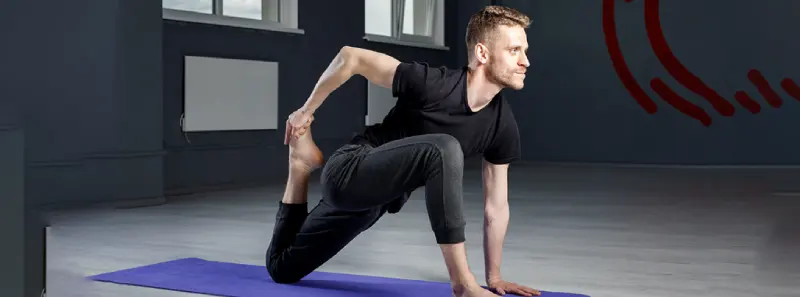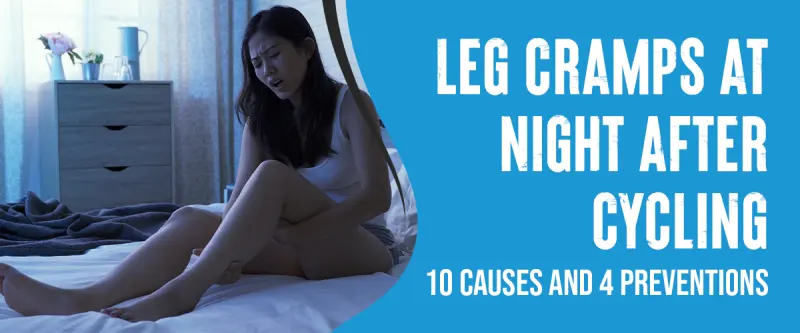Night leg cramps are often due to tired muscles and nerve issues and can be more familiar with aging or during pregnancy. Conditions like kidney failure, diabetic nerve damage, and blood flow problems can also trigger these cramps.
Cramping legs at night after cycling is often caused by muscle fatigue from repetitive use, disrupting neuromuscular pathways and leading to cramping. To alleviate this issue, proper stretching before and after cycling is incorporated to help prevent these cramps.
In this blog post, we’ll dive into nighttime leg cramps after cycling, exploring why they happen and what you can do about them.
Leg Cramps at Night After Cycling? 10 Hidden Causes

The sudden onset of leg cramps can be incredibly frustrating after a long cycling day. Understanding the causes behind these painful contractions can help prevent them and ensure a good night’s sleep. Here are some common factors that contribute to nighttime leg cramps in cyclists.
Dehydration & Electrolyte Imbalance
One of the most common causes of leg cramps at night in cyclists is dehydration and electrolyte imbalance. Sweating during a bike ride causes you to lose vital minerals like sodium, potassium, and magnesium.
The electrolytes in the body are crucial for muscle contraction and relaxation, so if they’re not replenished, they can lead to muscle cramps.
- Drink plenty of water before, during, and after your ride.
- Consider drinks with added electrolytes if cycling for a long time or in hot weather.
Overexertion
Pushing yourself too hard on the bike can cause muscle overuse and lead to cramps after cycling. This is especially true if you’re doing higher-than-usual levels of activity.
- Take regular breaks during your ride.
- Pace yourself and avoid pushing beyond your limits.
Poor Circulation
Poor circulation can cause leg cramps as well. If your muscles aren’t getting enough oxygen and nutrients due to reduced blood flow, they may cramp up.
- Make sure your cycling gear is tight enough.
- Regularly stretch and move your legs during breaks.
Muscle Fatigue

Fatigue can make your muscles more susceptible to cramping. This often results from inadequate recovery time between rides or insufficient time for your muscles to adapt to a new cycling routine.
- Ensure you get plenty of rest between rides.
- Gradually increase the intensity and duration of your rides.
Bike Position
The incorrect bike position can stress your muscles, leading to cramps. This includes having your seat too high or low or your handlebars in the wrong position.
- Ensure your bike is correctly set up to fit your body dimensions.
- Consider getting a professional bike fitting.
Lack of Conditioning
If your muscles aren’t conditioned for the demands of cycling, they’re more likely to cramp up. If you’re new to cycling or have recently increased the intensity of your rides.
- Fit your fitness routine with strength training and stretching.
- Gradually increase your cycling distance and intensity.
Sleep and Recovery
Poor sleep and inadequate recovery can contribute to nighttime leg cramps. Good quality sleep is essential for muscle recovery and preventing cramps.
- Aim for 7-9 hours of sleep each night.
- Consider practices like yoga or meditation to aid relaxation and sleep.
Delayed Onset Muscle Soreness (DOMS)
Delayed-onset muscle Soreness (DOMS) can be related to cycling, especially for people who engage in intense or prolonged cycling sessions. DOM occurs between 24 and 72 hours following exercise and is characterized by muscle stiffness, soreness, and discomfort.
Inadequate Cooling Down
A proper cool-down session after cycling helps your muscles gradually return to normal. Skipping this step can lead to muscle tension and potential cramping.
Lack of Stretching
Regular stretching helps maintain muscle flexibility and can reduce the risk of cramps. Not stretching adequately before and after cycling can leave your muscles tight and prone to cramping.
Cycling Leg Cramps at Night: Prevention Tips

Nighttime leg cramps can be extremely uncomfortable and disruptive to your sleep. Here are some strategies that may help alleviate this discomfort:
Stretching Exercises
Gentle stretching can ease the muscle tension. Try these steps:
- Slowly stretch the affected leg.
- Point and flex the foot to stretch calf muscles.
- Stretch for 30 seconds and repeat until the cramp subsides.
Massage Techniques
Massaging the affected area can also provide relief. Apply pressure and move slowly over the cramped muscle with your hands or a foam roller. This will relax the muscles and alleviate pain.
Heat or Cold Therapy
The use of ice or a heating pad can soothe the muscles and reduce cramping. A hot treatment increases blood flow and relaxes muscles, while a cold can numb the area and reduce inflammation. Make sure you wrap the source of heat or cold in a towel before applying it to protect your skin.
Over-the-counter Medications
Over-the-counter medications like ibuprofen can help relieve cramp pain, and over-the-counter antispasmodic drugs may help prevent muscle spasms. These should only be taken as directed by a healthcare professional.
Conclusion
A comprehensive explanation of post-cycling nighttime leg cramps is needed. This includes understanding the workings of our muscles and the factors leading to these cramps, including dehydration, overexertion, poor circulation, and muscle fatigue. It also includes exploring why they tend to strike at night and how to handle them.
Remember, the key lies in prevention and timely intervention. Stay well-hydrated, don’t push yourself too hard, and ensure your bike position is correct. If cramps occur, use stretching exercises, massage techniques, heat or cold therapy, and over-the-counter medications for relief.
So, don’t let the fear of cramps stop you from enjoying your rides. Take care of your body, pedal smartly, and continue to embrace the joy of cycling. Until next time, keep those wheels spinning, and sweet dreams.
Is There A Juice That Works Best for Cramps?
Yes, carrots and orange juice are excellent for cramps. It provides vitamin C, magnesium, and potassium to help alleviate painful cramps and contractions. You can drink them together as a blend or separately for similar benefits.
Do You Get Calf Cramps When Cycling?
Yes, calf cramps when cycling commonly start due to pointing toes during the stroke. To alleviate the cramp, drop your heel, stretch your leg, and allow it to recover, relieving some of the load temporarily.


